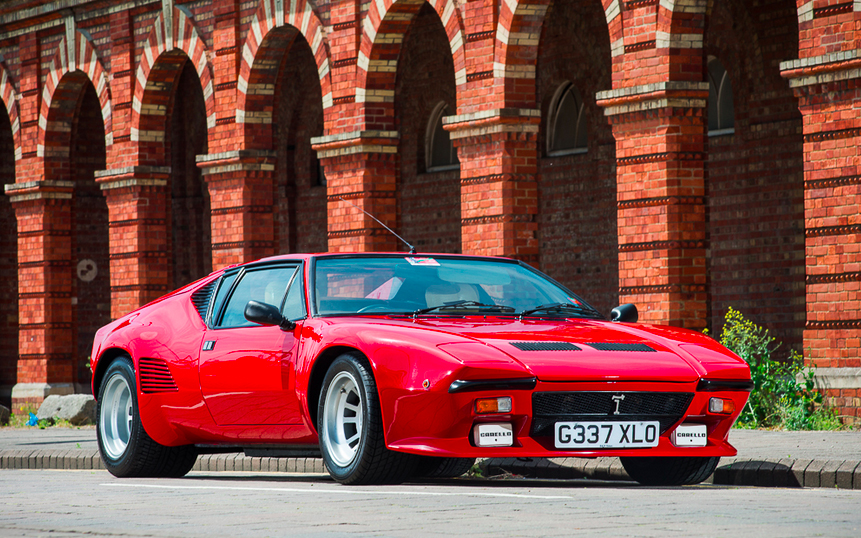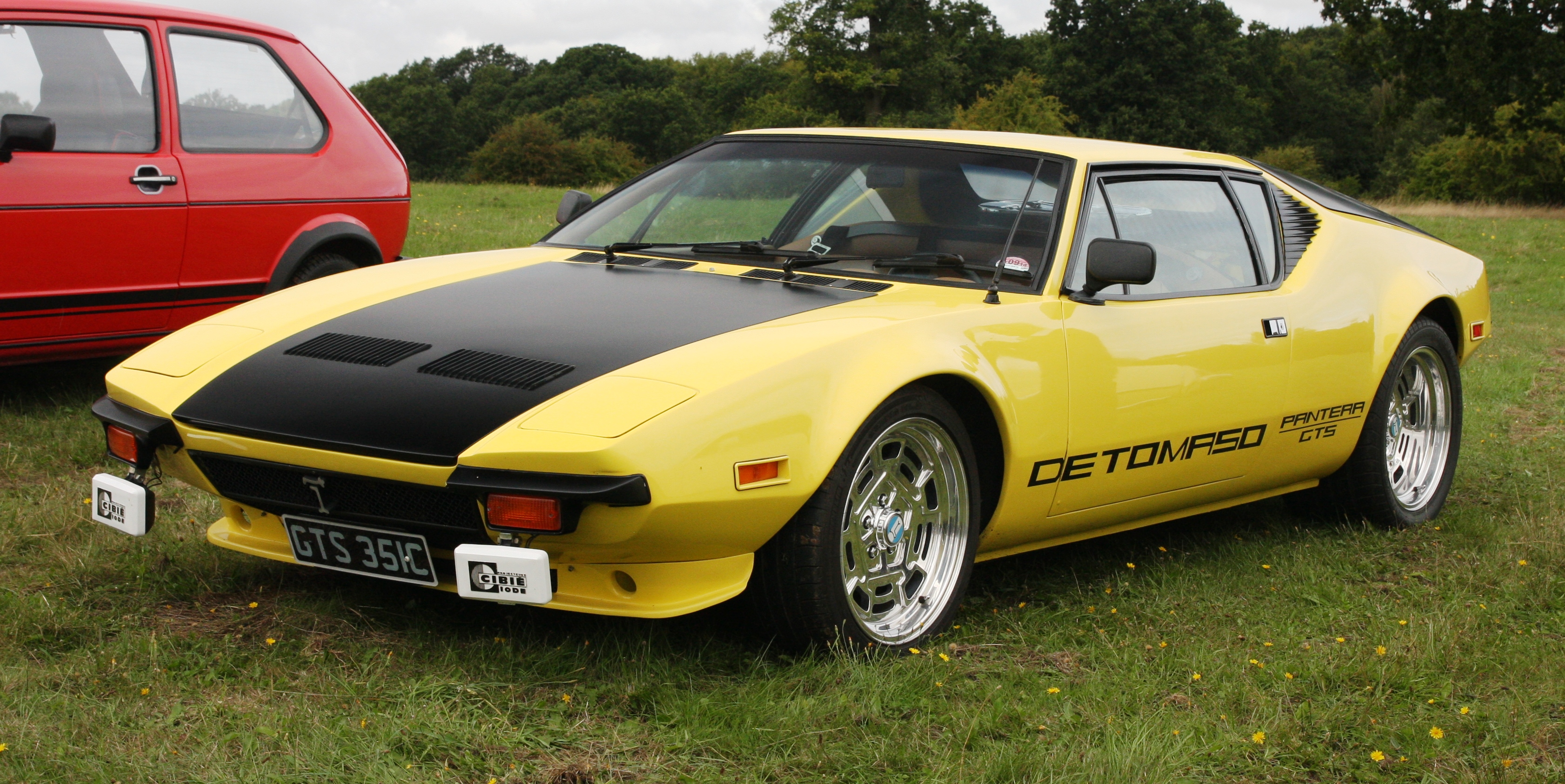DE TOMASO PANTERA: FORD’S SECOND STAB AT MODENA
When Ford’s plan to buy Ferrari was rejected at the eleventh hour, the Le Mans-winning Ford GT40 was the result – a car seemingly created out of pure spite. But Henry Ford II wasn’t finished yet; with four Le Mans wins under his belt by the late 1960s, Hank the Deuce would also become involved in another mid-engined sports car built to beat the prancing horse.
The story began on Ferrari’s doorstep at the De Tomaso factory in Modena. Marque founder Alejandro de Tomaso had been building mid-engined, Ford-powered sports cars throughout the 1960s, finding road and race successes with the Vallelunga and Mangusta models. After purchasing design and coachbuilding specialists Ghia in 1967, De Tomaso began work on a new, high performance road car – the Pantera.
Like the Mangusta, the Pantera made use of De Tomaso’s connections. Initially powered by Ford’s all-American ‘Cleveland’ V8 engine, the exterior was designed by Tom Tjaarda of Ghia, with chassis work overseen by Giam Paolo Dallara.
It was a well-thought-out design too, with fully independent race-inspired suspension featuring upper and lower control arms, coil-over shock absorbers, front and rear sway bars, four-wheel disc brakes, cast magnesium Campagnolo wheels and rack-and-pinion steering.
Inside, occupants were treated to extensive instrumentation, electric windows and even air conditioning – all wrapped up in an aggressive cockpit design.
After the striking Pantera was unveiled in Modena and New York in 1970, production examples appeared the next year and 3,000 vehicles were sold by 1972. De Tomaso was able to sell Panteras via Ford’s Lincoln-Mercury division dealers. The initial ‘pre-assembly line’ Carrozzeria Vignale bodies were hand-built with unique ‘push-button’ door handles, while early American production models had bigger ‘safety bumpers.’
As build quality problems emerged from early hand-built examples, Ford intervened, and precision stamped body panels improved the quality. Despite the improvements, Elvis Presley famously shot the 1971 example he had bought for his girlfriend when it refused to start. Some would argue that ‘The King’ was more annoyed about the reliability of Ford’s American engine, rather than the Italian contribution to the Pantera.

Credit: Charles01 via WikiCommons
In late 1971, a new Pantera GTS was launched with a high-compression engine, improvements to the inlet and exhaust manifolds, steering and brakes as well as larger wheels and flared arches.
In 1974, De Tomaso and Ford announced their separation, with Ford walking away with ownership of the design and coachbuilders Ghia. Despite the untimely split, the Pantera’s life was far from over.
After a flirtation with World Endurance Racing with V6-powered Pantera Group 3 and Group 4 race cars, the Pantera GT5 was born in 1980, which utilised the race car’s styling. This meant flared fibreglass wheel arches, a boot-mounted "delta" spoiler, a deep front air dam with integral driving lights, rocker panel extensions as well as luxurious upgrades inside and better stopping power.

Credit: Credit Silverstone Auctions
An even wider-bodied Pantera GT5-S arrived in 1984, followed by the Pantera 90 (SI) in 1990, of which 41 were built. The SI featured smoother 1990s styling by designer Marcello Gandini, responsible for designing the legendary Lancia Stratos and the rare Cizeta V16T.
Despite a short marriage to Ford, the Pantera managed to survive in production for 23 years, becoming the highest volume road-going production model from De Tomaso.
Recently, De Tomaso Automobili returned with two concepts, the P72 and P900. Which defunct car manufacturer would you like to see resurrected?

COMMENT